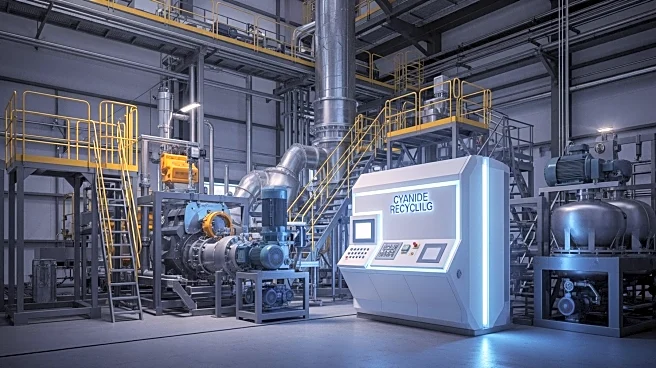What's Happening?
Researchers at Northwestern University have developed a carbon-negative construction material derived from seawater, which could significantly alter the carbon profile of cement and concrete production.
This innovative material is created by extracting dissolved ions from seawater and converting them into a solid carbonate-based binder. The process captures and sequesters CO2 during formation, offering a net CO2 removal pathway embedded within building materials. Unlike traditional Portland cement, which emits large volumes of CO2 through calcination of limestone and fuel combustion, the seawater-derived binder incorporates atmospheric or process CO2 into stable mineral forms. The research suggests that this material could serve as a substitute or complementary binder for concrete applications, potentially lowering lifecycle emissions of buildings and infrastructure if integrated at scale.
Why It's Important?
The development of carbon-negative cement is a significant advancement in the construction industry, which is a major contributor to global CO2 emissions. By offering a method to sequester CO2 within building materials, this innovation could play a crucial role in reducing the environmental impact of construction projects. If adopted widely, it could help lower the carbon footprint of infrastructure development, contributing to climate change mitigation efforts. However, several technical and commercial considerations need to be addressed, including manufacturing scale, durability, performance, and regulatory acceptance. The material's adoption will depend on its cost-competitiveness and the environmental impact of large-scale seawater use.
What's Next?
For the carbon-negative cement to be adopted at scale, researchers and industry stakeholders will need to address several challenges. These include establishing manufacturing processes that are energy and resource-efficient, ensuring long-term durability and performance in structural applications, and gaining regulatory and standards acceptance. Additionally, environmental factors such as local seawater chemistry and potential ecosystem impacts must be considered. The cost-competitiveness of this new material compared to traditional cement will also play a critical role in its practical adoption.
Beyond the Headlines
The development of carbon-negative cement highlights the growing trend of integrating environmental sustainability into industrial processes. This innovation not only addresses the immediate need to reduce emissions but also sets a precedent for future research and development in sustainable construction materials. It underscores the importance of interdisciplinary collaboration in tackling complex environmental challenges and could inspire further advancements in green infrastructure.











